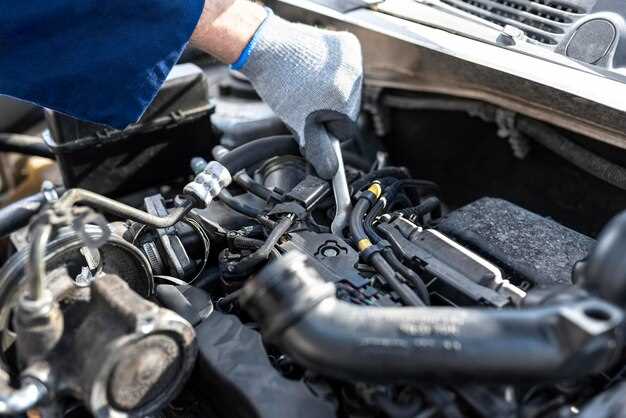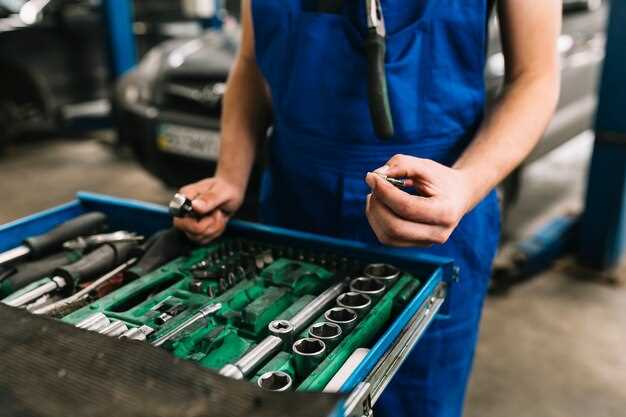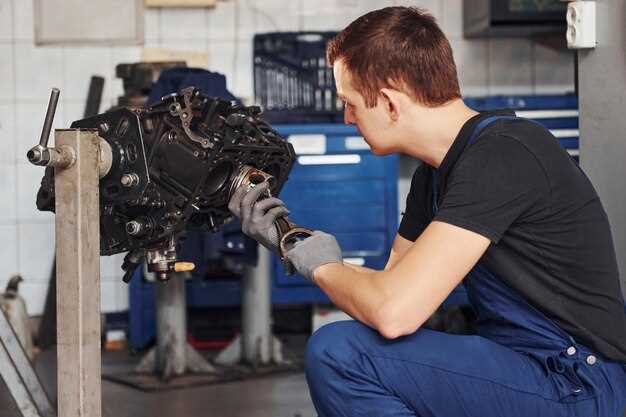
Maintaining the engine of your Corrado is essential for its longevity and performance. One critical aspect of this maintenance is ensuring that the cooling system is in good working order. Over time, coolant hoses can wear out, leading to leaks and potentially severe engine damage if not addressed promptly.
Replacing the coolant hoses is a straightforward task that can save you from costly repairs down the line. In this article, we’ll guide you through the entire process, ensuring you have all the necessary tools and knowledge at your disposal. Understanding how to properly replace these hoses will not only enhance your vehicle’s cooling efficiency but also give you confidence in your DIY skills.
Whether you’re a seasoned mechanic or a novice enthusiast, this guide will equip you with the step-by-step instructions to successfully replace the coolant hoses in your Corrado. Let’s dive into the essentials of keeping your engine cool and your vehicle running smoothly.
Identifying Worn or Damaged Coolant Hoses
Proper maintenance of your Corrado’s cooling system is essential for ensuring optimal engine performance. One key component of this system is the coolant hoses, which transport coolant between the engine and the radiator. Over time, these hoses can become worn or damaged, leading to potential overheating and engine failure.
To identify issues with coolant hoses, start by visually inspecting them for signs of wear. Look for cracks, bulges, or fraying along the surface. These indicators often signal that the hoses are no longer able to maintain the necessary pressure required for effective coolant flow.
Another crucial factor to consider is flexibility. Gently squeeze the hoses; they should feel flexible and resilient. If a hose feels stiff or brittle, it may be approaching the end of its lifespan. Additionally, check for any leaks or drips around hose connections, as this could indicate a breach in the hose integrity.
Furthermore, pay attention to any unusual smells or steam coming from the engine bay while driving. A sweet smell or visible steam can be a sign of coolant leaking from compromised hoses. If you notice these symptoms, it is important to inspect the hoses immediately.
Regularly monitoring the condition of your coolant hoses can prevent catastrophic engine damage and ensure that your Corrado continues to run smoothly. If you find any signs of wear or damage, replacing the hoses promptly is crucial for maintaining the cooling system’s efficiency.
Required Tools and Materials for Hose Replacement
Replacing coolant hoses in your Corrado is a straightforward task, but it requires specific tools and materials to ensure a successful job. Having the right gear on hand will make the process smoother and allow you to work efficiently.
- Coolant – Always have the appropriate type of coolant specified for your engine. This will help maintain optimal performance and prevent overheating.
- Replacement Hoses – Purchase high-quality replacement hoses that match the specifications of the original ones. Ensure they are designed to withstand high pressure and temperatures.
In addition to coolant and hoses, you will need the following tools:
- Flathead and Phillips Screwdrivers – These will be needed to remove any clamps or fasteners securing the hoses.
- Socket Wrench Set – A good set of sockets will help you loosen and tighten bolts that may need to be removed during the process.
- Pliers – Use pliers for squeezing and moving clamps, as well as for manipulating hoses during removal.
- Coolant Funnel – This is essential for pouring coolant back into the engine without spilling.
- Drip Pan – Place a drip pan under the engine to catch any leaking coolant during the hose replacement.
- Rags or Shop Towels – Having these on hand will help you clean up any spills and keep your work area tidy.
- Safety Goggles and Gloves – Protect your eyes and hands while working with coolant and tools, as these can be hazardous.
Ensure you have all these tools and materials readily available before starting the hose replacement to minimize downtime and enhance efficiency. Following these guidelines will lead to a successful and safe hose replacement procedure in your Corrado.
Draining the Coolant Safely Before Replacement

Before beginning the replacement of coolant hoses in your Corrado, it is essential to drain the coolant safely to prevent spills and ensure proper disposal. Start by allowing the engine to cool down completely, as hot coolant can cause burns and injuries.
Locate the coolant reservoir and radiator cap. Remove the radiator cap carefully to relieve pressure, and use a funnel to prevent spills. Next, find the drain plug at the bottom of the radiator. Place a container underneath it to catch the draining coolant. Open the drain plug and allow the coolant to flow into the container.
While the coolant is draining, inspect the hoses for any signs of wear or damage. This step is crucial as it can help identify any additional issues that may need to be addressed during the replacement process.
Once the coolant has fully drained, close the drain plug securely to prevent any leaks. Be sure to dispose of the old coolant in accordance with local regulations, as it is toxic and harmful to the environment. With the coolant drained, you can proceed to replace the hoses and complete the cooling system maintenance on your Corrado.
Removing Old Coolant Hoses: Step-by-Step Guide
When it comes to maintaining your Corrado’s engine cooling system, replacing old coolant hoses is crucial. Here’s a step-by-step guide to effectively remove the old hoses.
-
Safety First: Ensure the engine is cool before starting. Wear gloves and safety glasses for protection.
-
Locate the Coolant Hoses: Identify the hoses connected to the engine’s cooling system. Typically, there are upper and lower radiator hoses, as well as heater hoses.
-
Drain the Coolant: Use a drain pan to catch coolant. Locate the drain plug at the bottom of the radiator and open it to let coolant flow out. Close the plug after draining.
-
Loosen Hose Clamps: Use a screwdriver or pliers to loosen the clamps that secure the hoses to the engine and radiator. Carefully slide the clamps back along the hoses.
-
Remove the Hoses: Gently twist and pull the hoses away from their connections. Be cautious of any leftover coolant that may spill.
-
Clean Connection Points: Inspect the connections for any debris or leftover gasket material. Clean the surfaces with a rag to ensure a good seal for the new hoses.
Following these steps will ensure that you safely and effectively remove the old coolant hoses from your Corrado, preparing for the installation of new ones.
Installing New Coolant Hoses and Ensuring Proper Fit
When replacing coolant hoses in your Corrado, it is crucial to ensure that the new hoses fit properly to maintain effective engine cooling. Incorrectly installed hoses can lead to leaks, overheating, or even engine damage. Follow these steps for a successful installation.
Start by selecting high-quality coolant hoses that are compatible with your vehicle model. It’s advisable to use OEM (Original Equipment Manufacturer) parts to guarantee optimal performance. Once you have the right hoses, proceed with the following installation details:
| Step | Action | Details |
|---|---|---|
| 1 | Prepare Engine | Ensure the engine is cool before starting to avoid burns. Disconnect the battery. |
| 2 | Remove Old Hoses | Loosen the clamps using a screwdriver and gently pull the old hoses off the fittings. |
| 3 | Inspect Fittings | Check the hose fittings for damage or corrosion. Clean the fittings thoroughly before installing new hoses. |
| 4 | Install New Hoses | Slide the new hoses onto the fittings, making sure they are oriented correctly according to the original layout. |
| 5 | Secure Clamps | Tighten the hose clamps adequately to ensure no coolant will leak. Follow the manufacturer’s torque specifications if available. |
| 6 | Check for Obstructions | Ensure that the hoses do not interfere with any moving parts in the engine bay. |
| 7 | Fill Coolant | Refill the coolant system and bleed out any air trapped within the hoses to avoid overheating. |
| 8 | Test the System | Start the engine and let it reach operating temperature. Check for leaks around the new hoses and ensure the cooling system is functioning properly. |
Following these steps diligently will help you install the new coolant hoses correctly and ensure a proper fit for effective engine cooling. Regular maintenance and checks of these hoses can prevent future issues and prolong the life of your Corrado’s engine.
Testing the Cooling System After Hose Replacement

After replacing the hoses in your Corrado, it’s essential to test the cooling system to ensure everything is functioning correctly. A thorough examination helps prevent overheating and maintains engine performance.
Start by filling the coolant reservoir to the recommended level, using the appropriate type of coolant for your vehicle. Check for any leaks around the newly installed hoses. Inspect all connection points to ensure they are secure and properly tightened.
Next, run the engine and allow it to reach operating temperature. Keep an eye on the temperature gauge; it should remain within the normal range. If the gauge rises too high, this could be an indication of air pockets in the system or insufficient coolant flow.
To eliminate any air trapped in the cooling system, consider bleeding it. Locate the bleed valve, usually found on the thermostat housing, and open it while the engine runs. This process allows trapped air to escape, ensuring optimal coolant flow through the hoses.
Additionally, monitor the coolant level in the reservoir while the engine is running. If it drops significantly, there may be a leak or an issue with the new hoses. Address any issues immediately to avoid overheating.
Finally, take the vehicle for a short drive and observe its performance. After returning, recheck the coolant level and inspect the hoses again. Proper testing of the cooling system ensures reliable operation and enhances the longevity of your Corrado.










